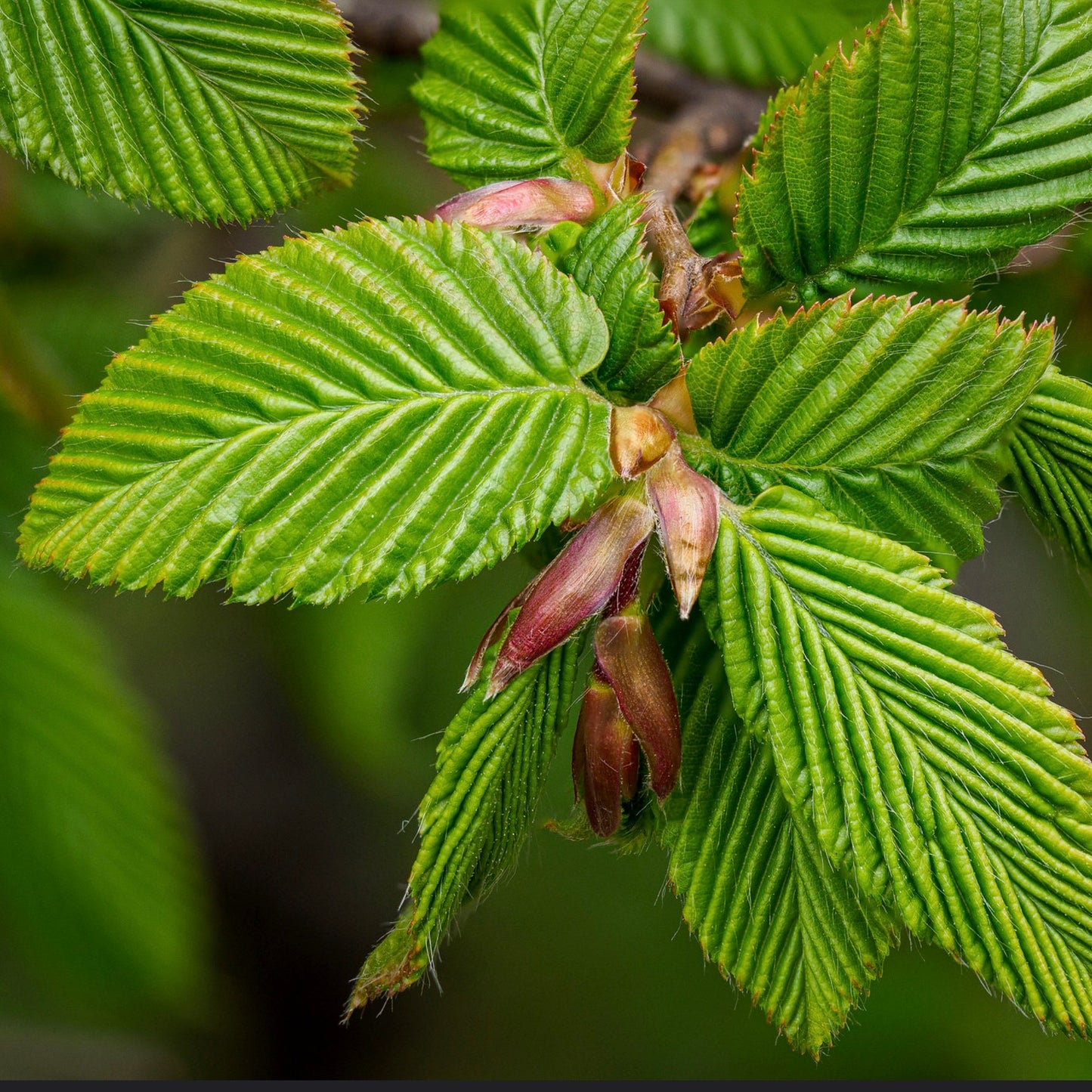- Catalogue Plants
Carpinus betulus 100-160cm
Carpinus betulus 100-160cm
Couldn't load pickup availability
Plant Description
Carpinus betulus, commonly known as European hornbeam, is a deciduous tree native to Europe and parts of Asia. It is known for its attractive foliage, distinctive bark, and versatility in landscaping.
-
Appearance: European hornbeam typically grows as a medium-sized tree, reaching heights of 30 to 50 feet (9 to 15 meters) with a similar spread. It has an oval to rounded crown when mature.
-
Leaves: The leaves are dark green, ovate, and serrated, with a prominent vein pattern. In the fall, they turn a beautiful yellow to orange or reddish-brown color, adding to the tree's ornamental appeal.
-
Bark: The bark of European hornbeam is smooth and gray when young, developing a distinctive fluted or muscle-like appearance as it matures. This unique bark texture is one of its distinguishing features.
-
Flowers: The tree produces inconspicuous, catkin-like flowers in the spring. These flowers are not particularly showy.
-
Fruit: Small, winged nutlets are produced in clusters, resembling hop cones. They persist on the tree into the winter months.
Cultivation:
-
Climate: European hornbeam is adaptable and can grow in a wide range of climates, from USDA hardiness zones 4 to 7. It is fairly cold-hardy but also tolerates heat and humidity reasonably well.
-
Sunlight: Plant Carpinus betulus in a location that receives full sun to partial shade. It can tolerate partial shade but will develop a denser crown in full sun.
-
Soil: This tree is not overly picky about soil type but thrives in well-draining, loamy soil. It can tolerate a range of soil pH levels.
-
Watering: European hornbeam prefers consistently moist soil, especially during its establishment phase. Once established, it becomes somewhat drought-tolerant but benefits from regular watering during dry periods.
-
Mulching: Apply a layer of mulch around the base of the tree to help retain soil moisture and reduce competition from weeds.
-
Pruning: Prune European hornbeam as needed to maintain its shape and remove dead or crossing branches. It can be trained into a variety of shapes, including a hedge or topiary.
-
Fertilizing: While this tree does not typically require heavy fertilization, you can apply a balanced, slow-release fertilizer in the early spring to encourage healthy growth.
-
Pests and Diseases: European hornbeam is generally resistant to most pests and diseases. However, monitor for common issues such as aphids, scale insects, or leaf spot, and address them promptly if they occur.
Cultivar: There are several cultivated varieties (cultivars) of Carpinus betulus that offer unique characteristics. Here are a few popular cultivars to consider:
-
'Fastigiata' (Pyramidal European Hornbeam): This cultivar has a more columnar, upright growth habit, making it suitable for smaller spaces or as a formal hedge.
-
'Columnaris': Similar to 'Fastigiata,' this cultivar has a more narrowly upright growth habit, making it an excellent choice for narrow spaces or alleys.
-
'Frans Fontaine': Another narrow, upright cultivar, 'Frans Fontaine' has an elegant and compact form, ideal for urban or formal landscapes.
-
'Pendula' (Weeping European Hornbeam): This cultivar has a graceful weeping habit, making it a unique and ornamental choice for gardens.
-
'Purple Pillar' (Purple European Hornbeam): This cultivar features purple foliage, adding a splash of color to the landscape.
When choosing a cultivar, consider your specific landscaping needs and preferences, as well as the available space and climate conditions in your area. Properly selected cultivars can add diversity and visual interest to your landscape.
IMPORTANT: Please be aware that picture 1 show adult plant not for sale, the offer is for a plant in the dimension indicated in title description.
Botanical family: Betulaceae
Botanical genus: Carpinus
Botanical species: Carpinus betulus
SKU:BA-0687-S
Cultivation
Cultivation
Info and Disclaimers
Info and Disclaimers
Plant Height: 100-160cm
Plant Diameter:
Pot Size:
Grafted/Not Grafted:
Disclaimer: Be aware that most plants change across seasons. If present foliage, could have been fallen or change in its color.


